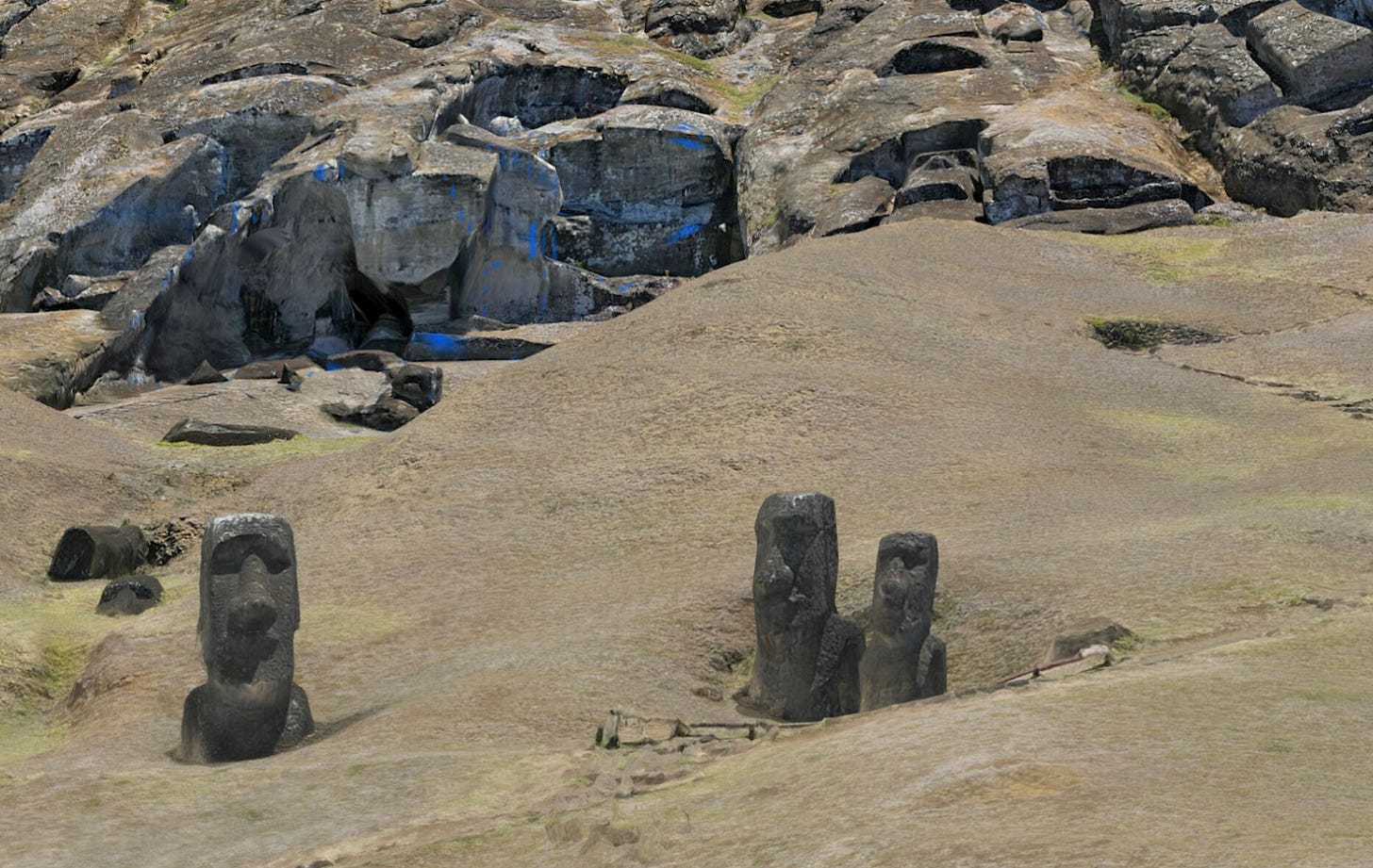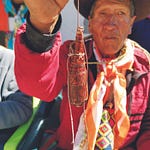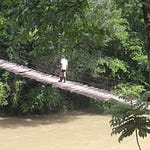A Volcano Full of Statues, Frozen in Mid-Creation
In the middle of the South Pacific, a volcanic crater holds an unfinished world. Hundreds of moai lie partly carved in tuff, their features softened by centuries of weather, their bodies still fused to the quarry walls that once birthed them. These monuments define Rapa Nui’s cultural landscape, yet the place where they were made has long been one of archaeology’s most frustratingly inaccessible sites.

Sheer slopes, fragile surfaces, and the sheer density of half-carved statues limit the kind of documentation that field archaeologists can safely attempt. For decades, Rano Raraku has been a tantalizing but incomplete chapter in the story of moai production.
That chapter has just been rewritten.
A new study in PLOS One1 presents the first high-resolution, fully navigable 3D model of the entire Rano Raraku quarry. Created through tens of thousands of overlapping drone images, the model allows researchers to zoom, rotate, measure, and analyze the quarry as if standing inside it. Except now, they are standing everywhere at once.
“Digital mapping is turning Rano Raraku into a laboratory that can be entered from any desk on Earth,” observes Dr. Lina Costas, an archaeologist at the University of Tübingen. “The model transforms the quarry from a remote landscape into a shared research space. It collapses distance without collapsing detail.”
This shift is more than technological convenience. It is altering how scholars understand the people who carved the moai, how they organized labor, and how they navigated the island’s geography at a scale previously invisible to the human eye.
Listen to this episode with a 7-day free trial
Subscribe to Anthropology.net to listen to this post and get 7 days of free access to the full post archives.








